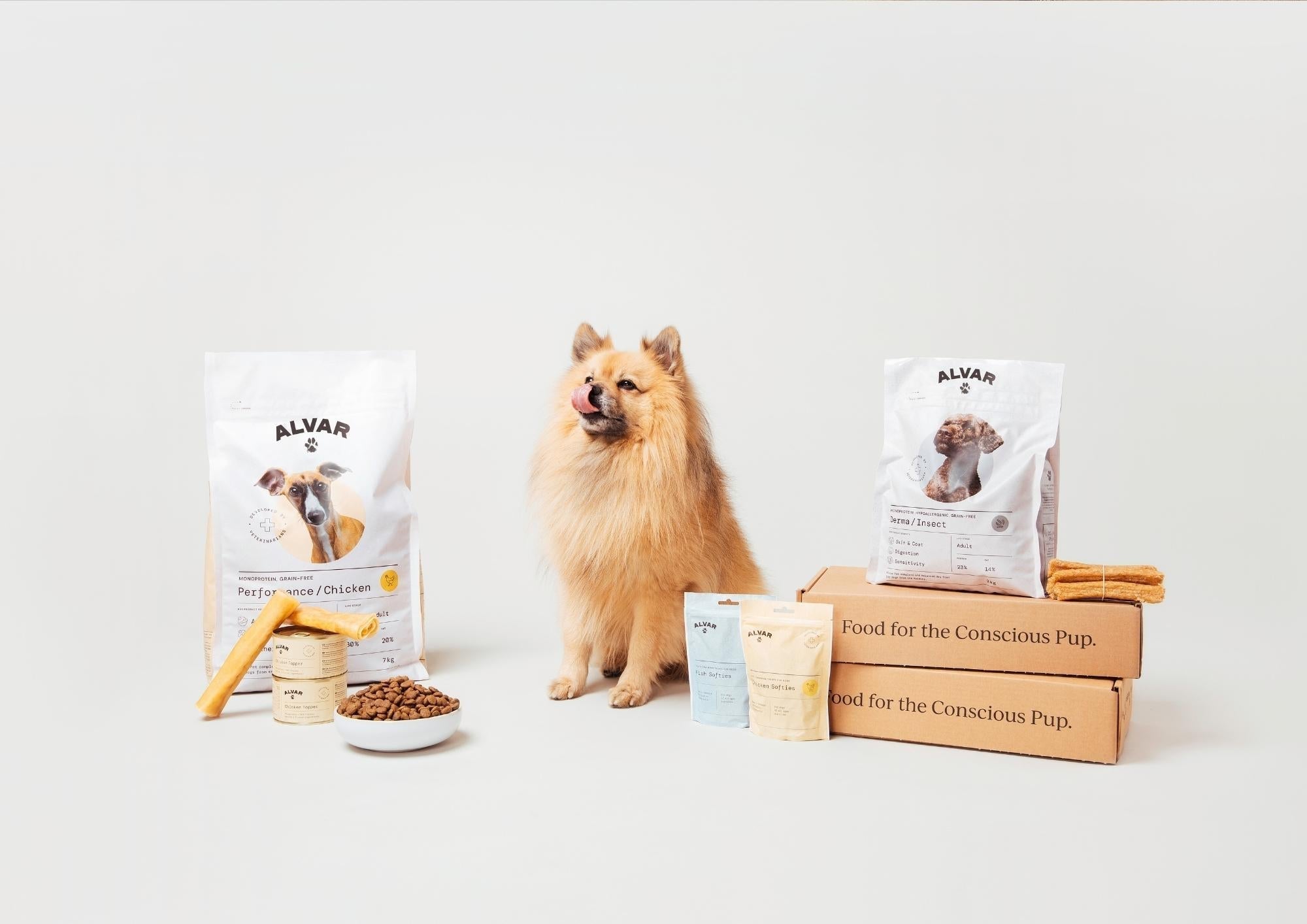This article was published in collaboration with Kuono.fi.
One dog owner pours dry kibble into a bowl, another mixes in wet food to boost appetite, while a third swears by raw feeding. There are countless ways to feed a dog, and finding the right approach can be overwhelming. Still, there are a few key points every dog owner should consider when choosing food.
Kuono asked our veterinarian and dog food recipe developer Henna Söderholm how to find the most suitable and tasty food for your dog. Here are Henna’s four tips to help you pick the right food:
1. Make sure your dog gets what it needs
Dogs need the right amount of energy and nutrients from their food to support bodily functions.
Fats provide energy, and fatty acids support skin and coat health. Proteins and their amino acids are essential building blocks that help maintain vital functions. Dogs can also use carbohydrates as an energy source, while fiber supports digestion. Additionally, food must contain adequate vitamins and minerals.
“The most important thing is that the dog gets all the nutrients it needs from the diet. The actual composition of the food—whether dry, wet, homemade, or commercial—is secondary,” says Söderholm.
There’s no one-size-fits-all answer. You have to consider factors like the dog’s size, age, activity level, and other individual needs. It’s also important to understand how the dog can best digest and absorb nutrients.
“Animal proteins are easier for dogs to digest, even raw, whereas plant proteins become more usable when processed, such as through cooking,” Söderholm explains.
“For example, raw potatoes aren’t suitable for dogs, but processed potato protein can be a great protein source.”
The easiest way to ensure your dog gets all the nutrients it needs is to use complete commercial dog foods, such as kibble. These usually meet official nutritional guidelines and are formulated based on established calculations that consider a dog’s characteristics.
“The suitability of food isn't always obvious just by reading the ingredient list. If you're unsure, it’s worth asking the manufacturer directly.”
Homemade diets can also work well, but you really need to know what you’re doing to meet all your dog’s nutritional needs.

2. Consider your dog’s individual needs
When planning a dog’s diet, it’s crucial to take its specific needs into account. Factors like age, activity level, breed, and size all affect the type and amount of food required.
“Puppies have their own special requirements. Older dogs don’t have official nutritional guidelines, but since they’re usually less active, it may be wise to switch to a lighter food to prevent weight gain,” Söderholm says.
The more active the dog, the more energy it needs. On the flip side, if a dog is naturally laid-back or has had its activity level reduced—for instance, due to spaying or neutering—a lighter food may be better.
Size also matters. Smaller dogs have faster metabolisms and relatively higher energy needs compared to larger breeds.
“Small dogs are more prone to constipation due to physiological reasons, while large dogs often have looser stools. You can balance stool quality with highly digestible foods and the right fiber content,” says Söderholm.
“You can also tailor feeding to other needs, like supporting joints in large breeds or preventing urinary stones in small breeds.”
Some dogs may have allergies or sensitivities that limit what they can eat. A vet may also recommend a special diet for dogs with liver, kidney, heart, or other health conditions.
3. Monitor whether the food suits your dog
Owners should keep an eye on their dog’s overall well-being and look for signs of whether the food is suitable. If your dog is energetic, lively, and appears healthy, the food is probably a good match.
“If something’s off with the diet, it may show in the dog’s skin or coat. A dry, flaky coat, excessive itching, or heavy shedding can indicate dietary issues.”
Check your dog’s poop, too. A healthy dog will poop a few times a day with firm stools. If your dog frequently has loose stools or constipation, it may be time to reconsider the diet.
“If your dog produces large amounts of stool, the food may not be very digestible. However, a high-fiber diet can also lead to increased stool volume.”
When petting your dog, occasionally feel their body condition: do the muscles feel firm and strong, and is the weight healthy? You should be able to easily feel the ribs under a thin layer of fat.
Before overhauling your dog’s diet, consider whether any recent changes—like new treats or chews—might be causing issues. Diet is a whole-picture issue, and anything your dog eats contributes. Sudden changes in food or treats can cause digestive upsets.
“You can only find the right food through trial and error, but don’t constantly or drastically change your dog’s diet. If needed, consult a vet,” Söderholm advises.

4. Make sure your dog enjoys it
Most dogs eat the same food day in and day out—possibly for their entire life. So it’s a shame if the food isn’t something they find enjoyable.
While many dogs are enthusiastic eaters, some can be picky. Taste preferences vary widely from dog to dog.
“A dog’s sense of smell is extremely important—even more so than taste. That’s why strong-smelling foods are usually more appealing,” Söderholm explains.
“As dogs age and their senses dull, their appetite may decrease. Offering food with a stronger smell can help in those cases.”
Wet food often smells stronger and is more palatable for some dogs than dry kibble. Texture also plays a big role for certain dogs. Even in dry food, how finely the ingredients are ground and the cooking temperature can affect palatability.
“Dogs’ preferences are partly learned. Many dogs like the food they grew up eating. They also form associations like humans—if a food made them feel unwell, they may not want it again.”
Dogs will often avoid foods that have caused them discomfort, such as allergies or stomach upsets. So, don’t underestimate your dog’s own choices. Often, the food they happily gobble up is the one that suits them best.
Text and photos: Niina Kinnunen



